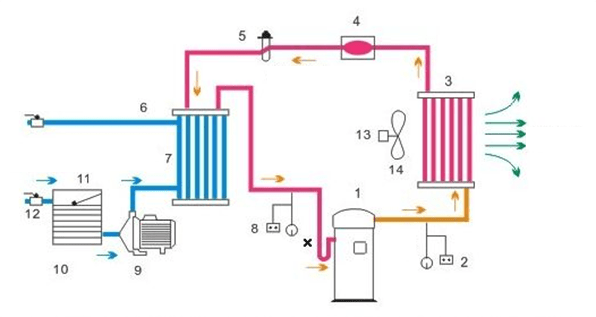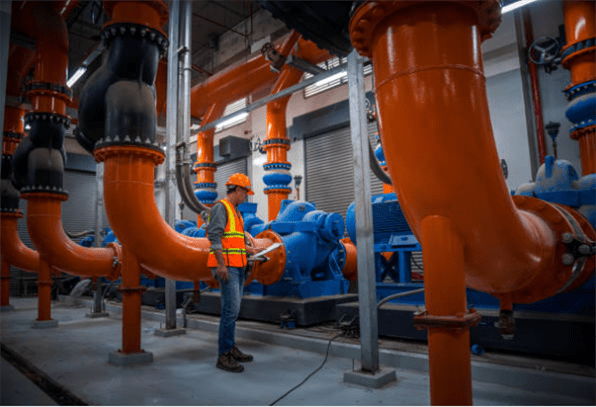
Figure 1: Industrial water chiller unit.
An industrial water chiller is a critical component in many manufacturing and industrial processes. It is responsible for cooling various types of equipment, which helps to prevent overheating and maintain optimal performance.
However, like any other piece of equipment, industrial water chillers can break down and require repairs. In this article, we'll provide some troubleshooting and maintenance tips to help you keep your industrial water chiller in good working condition.
1. Understanding the Basics of Industrial Water Chillers
Before we dive into the troubleshooting and maintenance tips, it's essential to understand the basics of industrial water chillers. Industrial water chillers are designed to cool water, which is then circulated through pipes to cool equipment, machinery, or products. These chillers come in different sizes and capacities, and the type of chiller you need will depend on the application.
There are two primary types of industrial water chillers: air-cooled and water-cooled. Air-cooled chillers use ambient air to cool the refrigerant, while water-cooled chillers use water to cool the refrigerant.

Figure 2: Chiller working principle diagram.
1. Compressor 2. High pressure controller 3. Condenser 4. Dry filter 5. Expansion valve 6. Antifreeze switch 7. Evaporator 8. Low pressure controller 9. Water pump 10. Water tank 11. Float switch 12. Ball valve 13 .Motor 14.Fan
2. Troubleshooting Industrial Water Chiller Problems
When an industrial water chiller breaks down, it can cause significant downtime and production losses. Therefore, it's essential to troubleshoot the problem as quickly as possible to minimize the downtime. Here are some common problems you may encounter with industrial water chillers and how to troubleshoot them:
2.1 Water Leakage in the Chiller Unit
First determine where the leak is. Here are some common causes and solutions:
1. Pump Leakage
Cause: Poor connection of the shaft seal or a damaged shaft seal.
Solution: Replace the pump instead of the shaft seal.
2. Water Tank Leakage
Cause: Pitting at the welding position of the water tank or long-term use.
Solution: Send the chiller unit back to the manufacturer to re-weld the leaking position.
3. Ball Valve and Diverter Leakage
Cause: Leakage from the ball valve or diverter.
Solution: Replace the ball valve or diverter.
4. Leakage at Float Ball Position
Cause: The float ball has fallen or the float ball position is improperly adjusted.
Solution: Reinstall the float ball and adjust its position properly.

Figure 3: Water chiller structure.
2.2 The Chiller Unit is Not Cooling
Cause: Refrigerant leakage, compressor failure, faulty control board, or overload.
1. Refrigerant Leakage
Check the low-pressure gauge. If there is no pressure, it indicates refrigerant leakage. Solution: Check and repair any leaks and inspect all copper pipe connections to identify the location of the refrigerant leakage.
2. Compressor Failure
Use a clamp meter to clamp the three wires of the compressor to measure the working current. If the current of the three wires is different, it is a preliminary judgment of compressor failure. The normal current for a 5HP compressor is about 9A-10A, and the opposite indicates a problem.
Solution: Replace the compressor.
3. Faulty Control Board
If the temperature displayed on the control board is not normal or does not match the actual temperature, the control board may be faulty.
Solution: Replace the control board.
4. Overload
If the desired temperature is not reached during the use of the chiller unit, or the temperature does not drop but instead rises.
Solution: it may indicate that the power of the chiller unit is not sufficient, and a larger chiller unit may be needed to reach the desired temperature.
2.2 Water-Cooled Chillers
Water-cooled chillers use water to cool the refrigerant. The refrigerant absorbs the heat from the water and releases it into the circulating water through the condenser, which is also cooled by a cooling tower. Water-cooled chillers are typically used in environments where water is readily available.
Water-cooled chillers have several advantages over air-cooled chillers. They are more efficient and can handle larger cooling loads. They are also quieter than air-cooled chillers. However, they require more maintenance.

Figure 4: Schematic diagram of the air-cooled industrial chiller.
2.3 Low-Pressure Alarm in the Chiller Unit
1. Refrigerant Leakage
Check the low-pressure gauge. If there is no pressure or the pressure is small, it indicates refrigerant leakage.
Solution: Check and repair any leaks and inspect all copper pipe connections to identify the location of the refrigerant leakage.
2. Faulty Pressure Controller
Solution: Check if the pressure controller can be reset. If it cannot be reset, replace the pressure controller.
3. Faulty Control Board
If all other components are working properly, the low-pressure alarm may be caused by a program error in the control board.
Solution: Replace the control board and adjust the parameters.
4. Clogged Filter
If the temperature on one side of the filter and capillary tube is lower, while the temperature on the other side does not change, it indicates a clogged filter.
Solution: Replace the filter.
2.4 High-Pressure Alarm in the Chiller Unit
If the pressure continues to rise after the chiller unit is turned on, a high-pressure alarm may occur. Here are some possible causes and solutions:
1. Is the water in the water tower turned on?? Is the cooling water loop unblocked?
2. Is the water quality in the water tower poor? If it has been used for more than six months without checking the water quality, the water tower needs to be cleaned.
3. If it is an air-cooled unit, the condenser needs to be cleaned if it is old.
4. If none of the above can solve the problem, it may be a problem with the pressure controller or control board, and the pressure controller or control board needs to be replaced.

Figure 5: Chillers used in various kinds of equipment.
Industrial water chiller repair requires a thorough understanding of the chiller unit and the ability to troubleshoot and perform regular maintenance. By diagnosing and solving common problems, you can keep your industrial water chiller running smoothly and avoid costly repairs. If you are not familiar with chiller repair, it is recommended to seek professional assistance.
3. Maintenance Tips for Industrial Water Chillers
Preventive maintenance is essential to keep your industrial water chiller in good working condition. Here are some maintenance tips to help you keep your chiller running smoothly:
3.1 Regular Cleaning
Regular cleaning is essential to prevent dirt and debris from accumulating on the chiller's coils and other parts. Dirty coils can reduce the chiller's cooling capacity and increase energy consumption. It's best to clean the chiller at least twice a year or more frequently if it's operating in a dusty or dirty environment.
3.2 Regular Inspection
Regular inspection is crucial to identify potential problems before they cause significant damage. Inspect the chiller's pipes, fittings, and connections for leaks. Check the refrigerant levels and ensure they are within the manufacturer's recommended range. Inspect the compressor and other components for signs of wear and tear.
3.3 Scheduled Maintenance
Scheduled maintenance is essential to keep your industrial water chiller in good working condition. It's best to schedule maintenance at least once a year or more frequently, depending on the chiller's usage and operating conditions. During scheduled maintenance, a professional technician will inspect and clean the chiller's components, check the refrigerant levels, and perform any necessary repairs.

Figure 6: Check industrial cooling tower.
4. Conclusion
Industrial water chiller repair and maintenance are crucial to ensure optimal performance and prevent downtime. By understanding the basics of industrial water chillers, troubleshooting common problems, and following the maintenance tips, you can keep your chiller in good working condition and avoid costly repairs. If you're not comfortable performing maintenance or repairs yourself, it's best to call a professional for help.
OKmarts specializes in the sales of various industrial parts, such as chiller compressors, various valves, fans and water pumps, if you are interested in these products, please contact us. Buy in bulk for additional discounts!
Related Info
Geothermal vs Air Source Heat Pump: Which One is Right for You?Geothermal, Air Source, and Water Source Heat Pumps: Which is the Best?
Water-Cooled Chiller vs Air-Cooled Chiller: Which One is Better?
Chilled Water System: Basics, Working Principle Diagram, Types and More
Types of Water Chillers (Chiller Basics, Condenser Type and Compressor Type)


